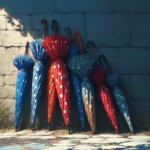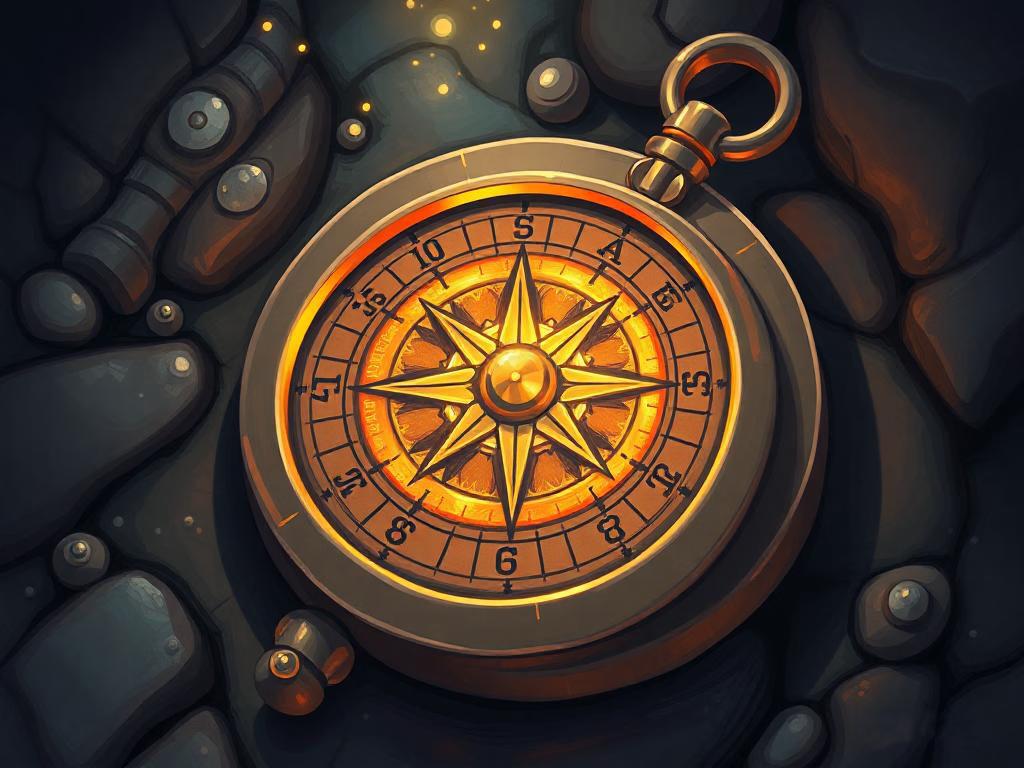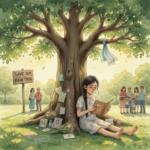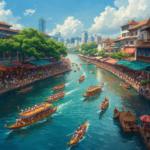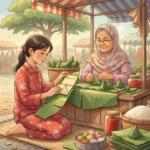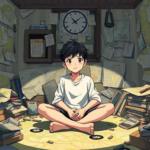
Rain had a voice in Air Itam.
It tapped on zinc roofs, gurgled through cracked gutters, and sang through the gaps in old wooden shutters. It slipped under doors and pooled in corners where the concrete had split like dried earth. After the monsoon swelled the rivers and the floodwaters finally receded, the town stood soaked and shivering, its walls streaked with mud and sorrow.
Bell stood in front of her house, barefoot on the damp tiles, watching the brown water drain into the storm drain across the lane. Her toes curled against the coolness. She didn’t mind the mess. She minded the silence.
Three days after the flood, the adults still spoke in hushed tones. Her mother scrubbed floors like she could erase the memory. Her father hammered loose tiles back into place, his shoulders tight with things he didn’t say. Even the neighbors, usually loud with laughter and gossip, moved quietly, as if afraid the sky might cry again.
But Bell had something to say.
She just didn’t know how to speak it.
She’d always drawn. On the margins of her math notebook. On the back of grocery receipts. On the dusty windowsill when the afternoon sun lit up the kitchen. Her sketchbook was full of half-finished faces, twisted vines, birds with too many wings—things that lived only in her head.
Then she found the paint.
It was left behind by the volunteers—cans of leftover house paint, forgotten in a corner of the community hall after repairs. Pastel blue, sunflower yellow, coral pink. One can was cracked, but still half-full of deep ocean green. They were meant for walls, not art. But to Bell, they looked like bottled-up feelings.
She waited until dusk, when the sky turned the color of wet slate. She took a brush from the repair pile and tiptoed to the side of Mrs. Lim’s shophouse, where the plaster had cracked like a broken eggshell after the flood.
Her heart thumped.
This was not allowed.
But the wall looked so sad.
She dipped the brush into the yellow. Took a breath.
And painted.
Not a shape. Not a word. Just a burst—like sunlight breaking through storm clouds.
Then another. A swirl of blue, like water remembering the sky. A twist of green, like vines climbing toward light.
She didn’t stop until the stars blinked awake.
The next morning, people paused as they passed.
“Who did this?” asked Mr. Goh, the kopitiam owner, wiping his hands on his apron.
“Looks like a rainbow threw up,” said Aunty Lina, but she was smiling.
Bell said nothing. She just walked to school, her shoulders lighter.
But that night, she returned.
And painted again.
This time, she added a girl with windblown hair, standing on a rooftop, arms outstretched. She painted a cat with butterfly wings. A tree with roots shaped like hands. A boat made of lanterns, floating on invisible water.
One by one, the cracked walls of Air Itam began to breathe.
Children pointed. Old folks paused on their walks. Someone left a thermos of sweet ginger tea by the corner where Bell painted.
She started calling them monsoon walls—not because they were born from rain, but because they held what the rain washed away.
Then came the sign.
It appeared on the community board, printed on crisp white paper:
NOTICE: URBAN RENEWAL PROJECT
All damaged exterior walls in designated zones will be repaired and repainted white by order of SkyHaven Development.
Aesthetic uniformity and structural integrity are our priorities.
No unauthorized artwork permitted.
Bell’s stomach dropped.
White.
Not just repaired. Erased.
She ran through the lanes, counting her murals. Seven. All in the “designated zone.” The one with the lantern boat—gone. The girl on the roof—covered. The singing cat with wings—wiped away like a mistake.
That night, she didn’t paint.
She sat on the rooftop, her sketchbook open, the ocean green paint can beside her, lid closed.
“What’s wrong?” Her younger brother, Kai, climbed up, munching on a piece of toast.
“Everything’s going to be white,” she said.
He shrugged. “White’s clean.”
“It’s also empty.”
Kai studied her. “You’re sad because of the paintings?”
“They weren’t just paintings,” she whispered. “They were… what we couldn’t say.”
Kai was quiet. Then he said, “Then tell them.”
“I don’t know how.”
“Talk. Like this.” He waved his hands. “Words. Out loud.”
Bell looked at him. “Easy for you. You never shut up.”
He grinned. “Exactly.”
The next morning, Bell went to the community hall. The SkyHaven representative was there—a woman in a crisp blazer, her hair pulled back so tight it looked painful. She stood beside a large map of Air Itam, dotted with red Xs.
Bell’s hands trembled. Her voice felt like a bird trapped in her chest.
She stepped forward.
“Excuse me,” she said. Her voice was small. “I made the paintings.”
The woman looked down. “Ah. The child artist. Cute. But rules are rules. The development plan is final.”
“They’re not just cute,” Bell said, louder. “They’re ours. The walls—they were broken. The paint—it was leftover. No one wanted it. But I used it to show… to show that we’re still here.”
The woman sighed. “I understand sentiment. But progress requires order. Uniformity. White is neutral. It’s safe.”
“Safe?” Bell’s voice cracked. “The flood was safe? Losing everything was safe? And now you want to paint over what helped us remember we’re still alive?”
A few neighbors had gathered. Mrs. Lim nodded slowly. Mr. Goh folded his arms.
The woman hesitated. “This isn’t a debate.”
Bell took a deep breath.
Then she did something she’d never done before.
She spoke without stopping.
“I painted the girl on the roof because my cousin Mei couldn’t sleep after the flood. She dreamed of water. So I gave her a girl who wasn’t afraid of the sky.
I painted the boat of lanterns because Mr. Arif said his wife used to light one every monsoon, praying for calm. She passed last year. Now the boat sails for her.
The vine with hand-roots? That’s for the wall that cracked when the earth shook. It’s not broken. It’s holding on.
You can paint over them. But you can’t paint over what they mean.”
Silence.
Then—clapping.
Soft at first. Then stronger.
Mrs. Lim. Mr. Goh. Aunty Lina. Kai, from the back, grinning.
The SkyHaven woman blinked. “I… I’ll need to consult my superiors.”
That afternoon, Bell returned to the lane.
A painter in a gray uniform stood before the mural of the lantern boat, roller in hand.
Bell froze.
Then the man turned.
He dipped his roller—not in white—but in gold.
“I’m supposed to whitewash,” he said quietly. “But I’m adding a border. If no one asks.”
Bell’s eyes stung.
Word spread.
The next day, another painter painted a tiny bird into the corner of Mrs. Lim’s wall. A third added stars above the girl on the roof.
The white paint arrived—but it was used only on blank walls. The monsoon murals? Left untouched.
Not because of rules.
Because the town had spoken.
Not with signs or protests.
But with brushes.
And Bell?
She still didn’t talk much.
But now, when she did, people listened.
And sometimes, late at night, if you walk through Air Itam, you’ll see a girl in paint-splattered shoes, adding one more stroke to a wall that remembers.
A single word, in looping cursive, beneath the roots of a vine:
We stayed.

